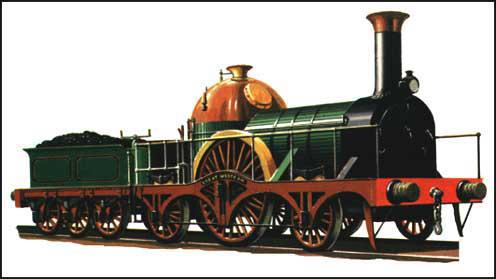Great Western
In March 1833, the 27 year old Isambard Brunel was appointed chief engineer of the Great Western Railway. The strategy was to build a railway that would link London and Bristol. The first section of the track that went from London to Taplow (Maidenhead) was opened in 1838. The line was completed to Bristol in 1841. The Great Western Railway was the first to install electric telegraph alongside its line.
The building of the London to Bristol line helped to establish Isambard Brunel as one of the world's leading engineers. Impressive achievements on the route included the viaducts at Hanwell and Chippenham, the Maidenhead Bridge, the Box Tunnel and the Bristol Temple Meads Station. Controversially, Brunel used the broad gauge (2.2 m) instead of the standard gauge (1.55m) on the line.

Swindon was about halfway between London and Bristol and was chosen as the junction for the line to Gloucester. Swindon was also the site of the Great Western Locomotive Works. Daniel Gooch, who had worked with Robert Stephenson in Newcastle-upon-Tyne, was put in charge of locomotive production. Gooch was told by the company to produce a "colossal locomotive that should easily surpass anything that had gone before". The result of this directive was The Great Western that could travel at an average speed of 67 mph. It has been said that "while Brunel built the Great Western, Gooch made it work".
By 1844 the Great Western Railway had opened a new line from Bristol to Exeter and from Bristol to Gloucester where it met the standard gauge of the Birmingham & Gloucester line. This created problems as passengers and goods had to be transferred from one train to another. One of the consequences of using the broad gauge was that Great Western locomotives could not use Euston Station and Brunel had to build its own station at Paddington. This was not completed until 1854.
